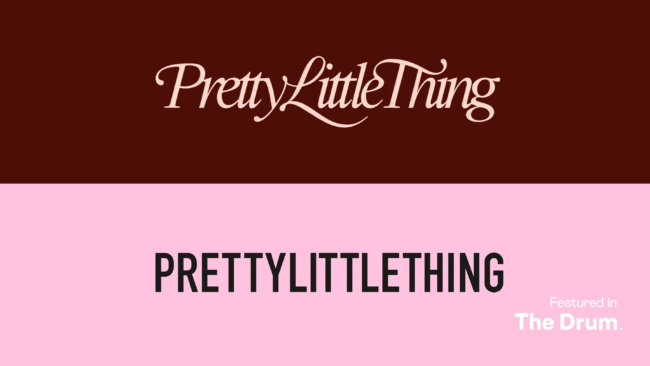
The beauty industry – from high end to mass market – was long dominated by legacy brands, designer fashion houses and global corporations, with a smattering of retailers’ own brands added into the mix. But inevitably for a sector so favored by younger generations and associated with fashion trends, new challenger brands and startups have entered the market. Often to a loud fanfare.
Glossier was one such startup brand. Capturing millennials’ attention and maximizing the impact of social media and influencer endorsements, Glossier created beauty buzz and pulled in the shoppers, in equal measure. It enjoyed massive success with some standout products that perfectly tapped into young people’s more minimalist beauty requirements.
Its products were good value and its range was tight and decisive – instead of five types of blush there was just one that did a great job. With its sleek packaging, products were delivered in a reusable plastic pouch and the Glossier tone of voice was human – every order came with stickers that, even if you didn’t use them, brought glee. Its products arriving through the post was an event to be anticipated.
The site was packed with reviews so shoppers could read real people’s opinions and endorsements, which meant they didn’t need an in-person experience, instead hearing from other faithful users.
A turn in fortunes
So when the story broke that the company had been forced to lay off a third of its corporate staff – more than 80 people – shockwaves rippled through the industry. The news emerged via an email to all employees from its founder and chief exec, Emily Weiss. In it, Weiss admitted that the business had “prioritized certain strategic projects that distracted us from the laser-focus we needed to have on our core business” and that it “got ahead of ourselves on hiring”. She took responsibility for these “missteps”.
What went wrong for Glossier? How did this darling of the direct-to-customer (D2C) startups – less than 10 years old and valued at $1.8bn in 2021 – end up with a string of bad publicity before this latest announcement further put the spotlight on its business strategy?
Employee experience
There are a couple of aspects of its growth trajectory that immediately ring warning bells. The first is in response to the bad publicity prior to this round of layoffs. From a growing weight of criticism about uninspiring new products, limited shade options and products being unsuitable for problem skin to online allegations of racism and a toxic work culture, it suggests that it was falling short on the inside despite often appearing to get it right on the outside.
Yes, it burst on the scene and felt different and distinctive – refreshing in its sector with its home delivery and pink jumpsuit-clad editors (sales associates enjoyed their own rebrand) – but if you don’t get the employee experience right, there will inevitably be trouble ahead.
Despite the stylish outfits and unusual job titles, Glossier wasn’t authentically engaging with its staff. It didn’t address the complaints made about it nor treat people with dignity and respect. The people are the brand and when the people revolt, the brand will suffer.
Misguided business strategy
Coupled with that, the company made some risky business decisions during the height of the pandemic that seem to have cost it dearly. From an outsider’s perspective, it looks like the business spread itself too thinly, going wide instead of going deep and concentrating on what it was great at.
Glossier was one of the first companies to really embraced the concept of delighting on the doorstep with its home delivery service. It understood the business imperative of direct contact with customers (and the corresponding access to data and purchasing insight), which many other brands rushed to gain when lockdown kicked in and shoppers migrated online. And more than that, Glossier knew that home delivery needed some theatre to elevate the customer experience so that receiving its products wasn’t just about order fulfilment but a treat to anticipate.
But that was easily copied as others jumped on the bandwagon and it found traditional retailers encroaching on its space as they looked to improve their home deliver experience and D2C channels. Glossier was the leader and it should have stepped up its innovation, keeping its momentum and staying ahead of the pack, to explore how best to engage consumers in new ways.
Retail risks
Instead, its attention seems to have gone elsewhere as it looked at a totally new business model – retail. And as anyone who has ever operated in retail knows, it is a beast all of its own and very different to the D2C model.
It opened high profile stores in Seattle and Los Angeles in 2021, joined by its first UK flagship store in London’s Covent Garden in December 2021. At the time, Weiss said “the world of Glossier is ready to exist again in 3D” as these permanent stores were announced. But its aim of a New York site this year now appears delayed.
So, while it has referred to itself as a digital-first company and both a technology and beauty company, many of the recent layoffs have been in the technology team. It feels as if Glossier is confused about its direction of travel.
Going into retail isn’t necessarily a bad idea, but Glossier should have spent more time defining the service experience – especially in terms of using its sales force and the instore rituals that need to be instilled to create extraordinary service. No brand can afford to view retail as an add-on, just a billboard or pop-up brand experience – especially a company like Glossier that has built its brand around people and community.
So how to overcome the poor business performance and TikTok takedown videos? Perhaps it is time for Glossier to adopt its own minimalist approach to beauty and makeup and apply it to its business – to take a step off the accelerator, simplify and go back to its roots, taking what made the brand special to begin with and tangibly translating that both online and instore.
This must start with the products – quality control is essential and attention to detail second to none as the market is replete with competitors. If you are going for fewer products, they need to standout. And today, perhaps ‘extra’ packaging feels incongruous with the direction of travel for sustainability. It could be time to rethink the plastic pouch, find alternative more environmental packaging innovations and make your mark with those.
Rapid growth exposes the cracks and now Glossier needs to slow down and fix those before it tries to move on. And absolutely central to this will be its attitude to employees. It needs to respect and invest in its staff – which means honestly addressing and responding to criticisms so it can take engaged and loyal staff on this journey.


